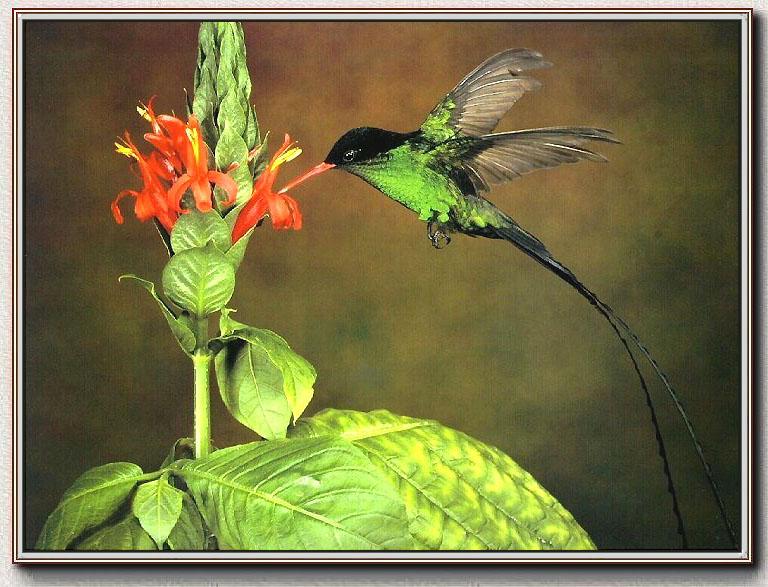|
| Query: bird | Result: 3082nd of 32675 | |
Hummingbird - Western Streamertail
| Subject: | Hummingbird - Western Streamertail
| | Poster: | Donald Mathis (Donald Mathis)
| |

| File size : 87572 bytes
File date : 1997:08:20 09:00:00
Resolution: 768x587
Jpeg process : Baseline
Posted Newsgroups: alt.binaries.pictures.animals
Posted Date: Tue, 19 Aug 1997 07:28:27 -0500 |
Content-Type: image/jpeg; name="WesternStreamertailHummingbird_01.jpg"
|
Comments |
|---|
| | Guest |
|
The Green-and-black Streamertail, Red-billed Streamertail or Doctor Bird (Trochilus polytmus) is a long-tailed hummingbird.
They are the most abundant and widespread member of the hummingbird family on the island of Jamaica, where the streamertail is also the national bird. Incidentally, the bird known to scientists as Trochilus polytmus, is the name-bearer of the whole hummingbird family, the Trochilidae. Formerly believed to be conspecific with the Black-billed Streamertail of extreme eastern Jamaica, the latter is now considered a distinct species (Trochilus scitulus). Thus, T. polytmus occurs west of a line from Morant Bay following the Morant River, and via Ginger House and the middle Rio Grande to Port Antonio (Gill et al., 1973). |
| | Guest |
|
| cute humming bird!! xoxo |
^o^
Animal Pictures Archive for smart phones
^o^
|
|
|

